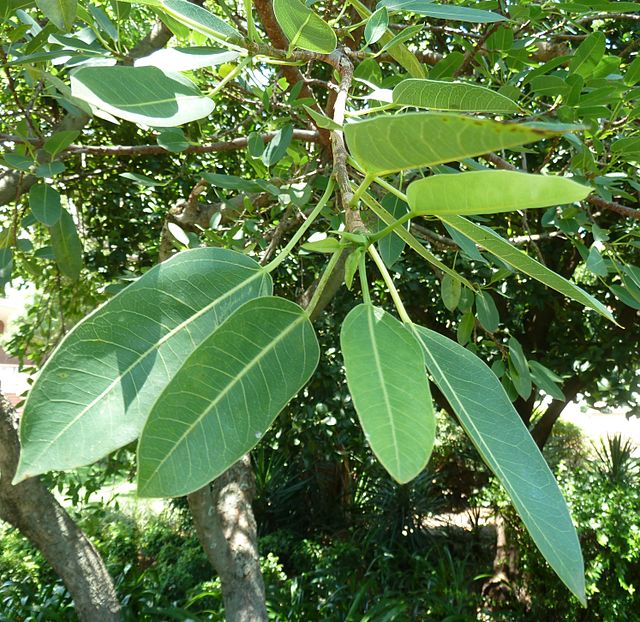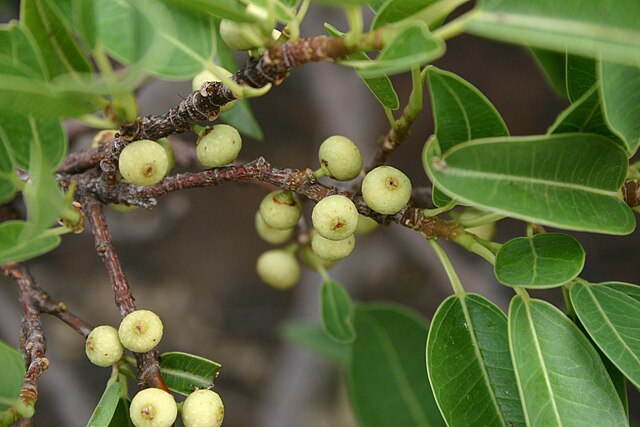The Wonderboom is an evergreen fig species that ranges from the KwaZulu-Natal midlands northwards to tropical East Africa. It grows especially on outcrops, rocky hillsides and along cliffs fringing water courses and may rarely grow up to 10 m tall, and acquire a leafy spreading crown.
Ficus salicifolia
Trees of the Wonderboom grove
Diagnostic rounded leaf base, regular lateral venation and unbranched, curved basal pair
The figs on short stalks
Ficus ingens, the red-leaved fig, is a fig species with an extensive range in the subtropical to dry tropical regions of Africa and southern Arabia. Despite its specific name, which means "huge", or "vast", it is usually a shrub or tree of modest proportions. It is a fig of variable habit depending on the local climate and substrate, typically a stunted subshrub on elevated rocky ridges, or potentially a large tree on warmer plains and lowlands. In 1829 the missionary Robert Moffat found a rare giant specimen, into which seventeen thatch huts of a native tribe were placed, so as to be out of reach of lions.
Image: Ficus ingens, habitus, b, Skeerpoort
Image: Ficus ingens 3c
Covering a north west facing rock surface at Pelindaba, South Africa
Growing from a slate fissure at Pelindaba








